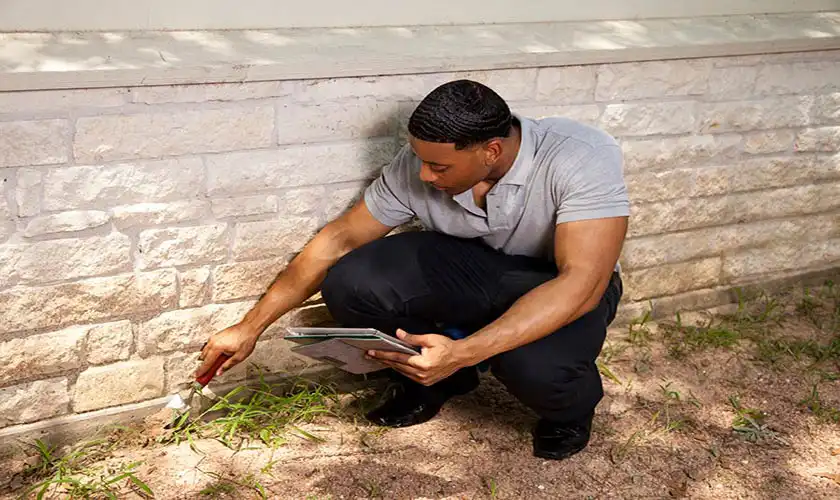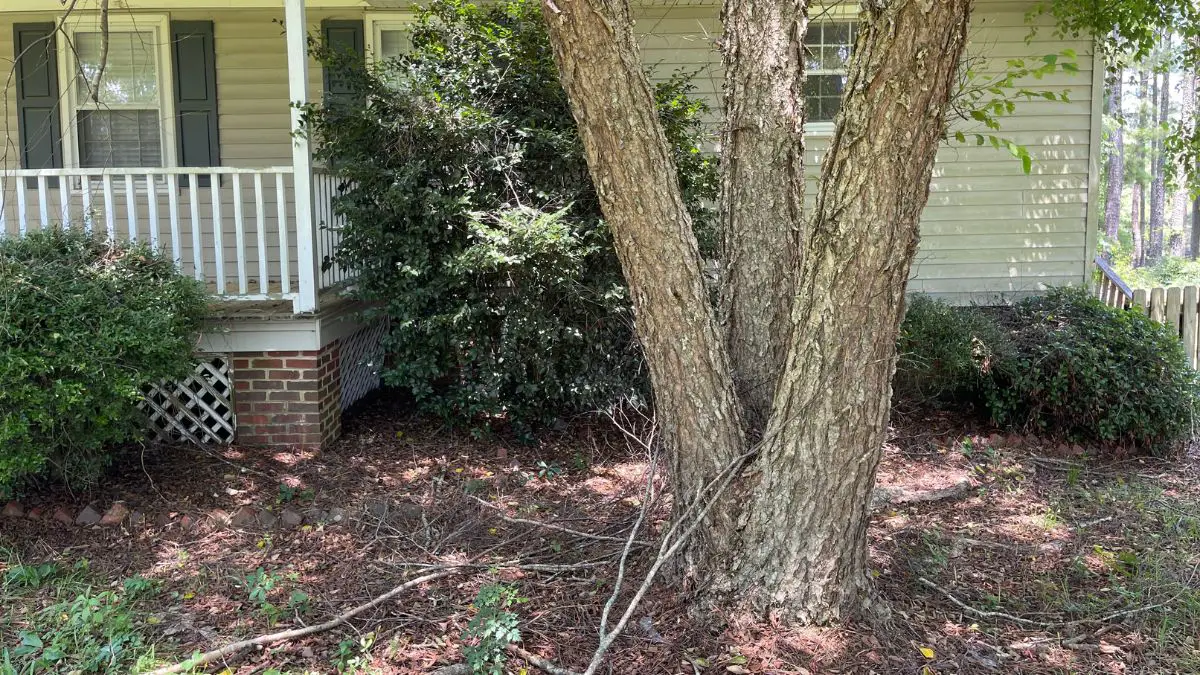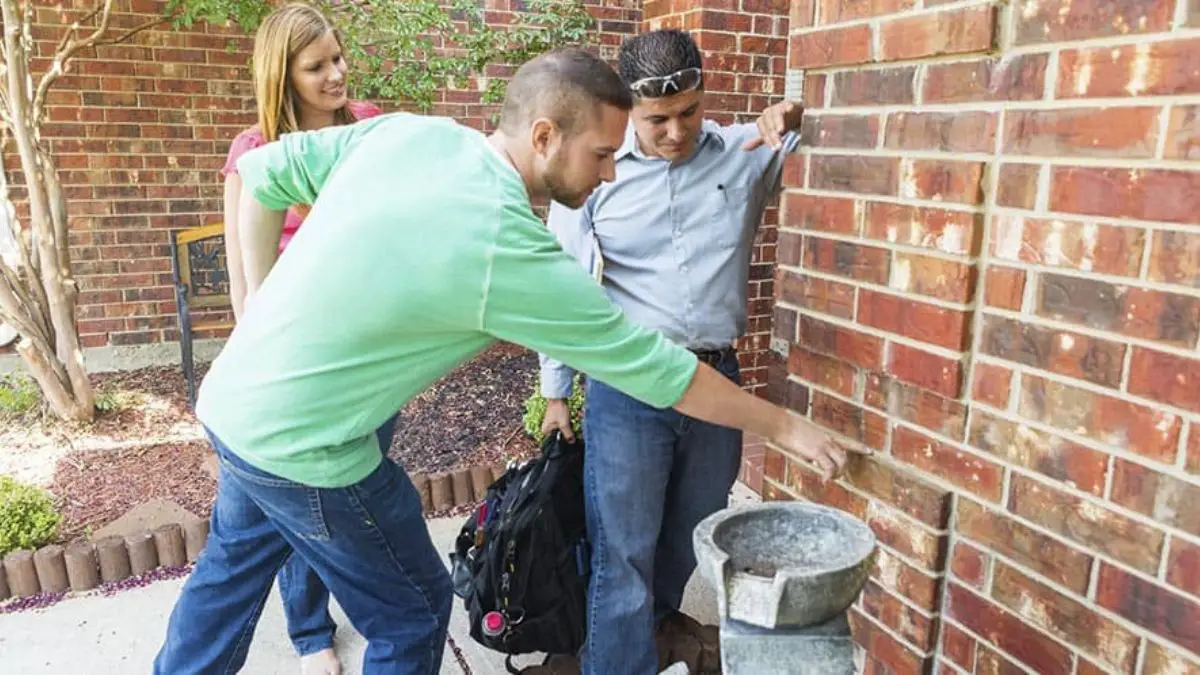You might be wondering why is proper foundation maintenance so important. Well, let’s dive into the world of Pier and Beam Foundations to find out.
When it comes to your home, nothing is more essential than a solid foundation. It’s the bedrock upon which everything else rests. But like any other part of your home, it requires regular maintenance and occasional repairs. This is particularly true for pier and beam foundations, a common type of foundation in many homes.
Pier and beam foundation repair methods include leveling and stabilizing, pier and beam replacement, subfloor and joist repair, and crawl space encapsulation. While costs vary depending on the extent of damage and repair method, a typical pier and beam foundation repair costs about $7,000 to $15,000.
Understanding the basics of pier and beam foundations is the first step toward ensuring the longevity and stability of your home. These foundations are unique, offering advantages and challenges you must know.
Get FREE quotes from local foundation repair contractors in your area today. Whether you need a pier replaced, basement waterproofing, or a full foundation replacement - We Can Help! All Contractors are screened, licensed, and insured.
Why You Might Need to Repair Your Pier and Beam Foundation
You might be wondering why your pier and beam foundation needs repair. Well, there are several factors that can lead to foundation issues. Poor soil conditions, for instance, can cause your foundation to settle or heave. This means your house might sink into the ground or be pushed upward.
Poor building practices can also lead to foundation problems. While building practices have improved over the years, not all new homes are created perfectly and they’re still susceptible to issues.
Another factor is the lack of water mitigation or control. If water gets into expansive soils, they will expand and cause heaving. These soils compact when they get too dry, causing foundation settlement.
Lastly, if your house wasn’t seismically retrofitted, it might not be properly bolted to the foundation to deal with seismic activity.
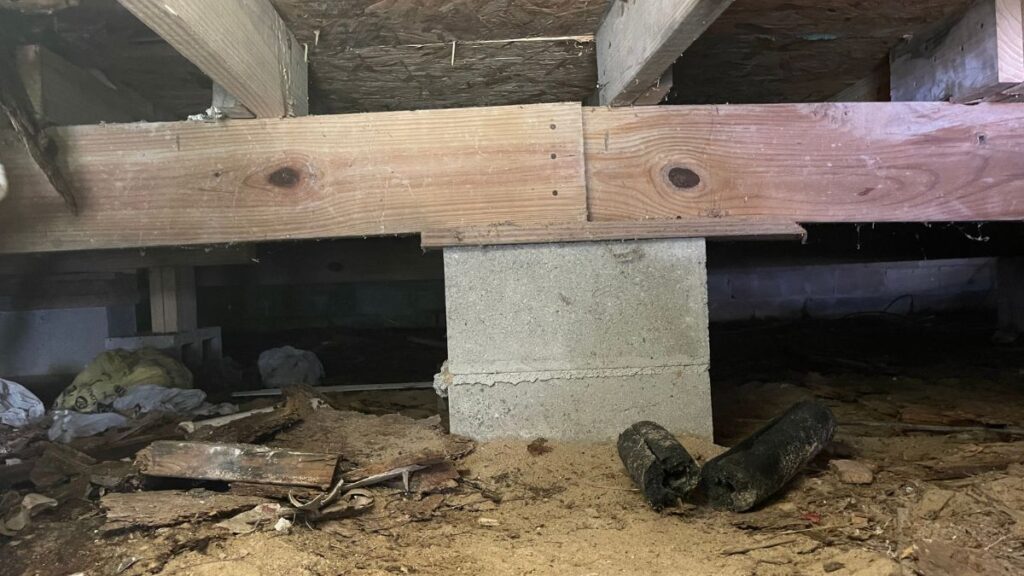
The Cost of Pier and Beam Foundation Repair
You’re probably thinking about the cost of pier and beam foundation repair. While it’s not typically cheap, you might be surprised to learn that the costs are similar to other types of foundations. The cost can vary depending on your foundation’s size and scope and the damage’s extent.
You might need to have your piers and beams re-shimmed on the low end. On the high end, you may need to replace piers and beams completely and/or add additional block piers foundation.
| Repair Type | Cost Range | Average Cost |
|---|---|---|
| Simple Repairs and Maintenance | $1,000 – $3,000 | $1,550 |
| Replacing or Adding Piers | $1,500 – $5,500 | $3,500 |
| Replacing Piers and Wood Beams | $7,000 – $30,000 | $16,000 |
What is a Pier and Beam Foundation?
You’ve probably heard the term pier and beam foundation before, but what does it really mean? Let’s break it down.
A pier and beam foundation is a type of foundation that consists of three major components. First, there are concrete pads, which are placed at ground level. These pads serve as the base for the foundation. Next, concrete blocks are stacked on top of these pads. Finally, a concrete foundation beam is built around the perimeter of the house or structure.
This type of foundation is prevalent in homes with heavier siding materials like brick or stone because of its high load capacity. It’s designed to support the weight of the house and distribute it evenly across the ground.
You might wonder how this differs from a block and base foundation. Good question.
Block and base foundations are very similar to pier and beam foundations. The main difference is that block and base foundations do not have concrete foundation beams around the perimeter. They are more suitable for homes or structures with lighter siding materials like wood or aluminum.
Understanding these differences is crucial when it comes to foundation repair and maintenance. Each foundation type has its unique set of challenges and potential issues.
Warning Signs of Pier and Beam Foundation Problems
Awareness of the warning signs of pier and beam foundation problems is crucial. Early detection can save you from costly repairs and potential structural damage to your home. So, what should you be looking out for?
One of the most common signs of a problem with your pier and beam foundation is issues with your floors. You might notice that they are bowing or sinking in places or slanting in one direction. These are all signs that your foundation may be in trouble.
In addition, you might see gaps in your floors or other types of damage. Excessive creaking is another common sign of foundation problems.
6 Warning Signs to Look Out For
But the warning signs aren’t limited to your floors. Here are some other things to look out for:
- Interior Sheetrock Cracks: If you see cracks in your interior sheetrock, this could indicate movement in your foundation. These cracks often appear around doorframes and windows or where walls meet ceilings. They can be small hairline cracks or larger, more noticeable ones.
- Doors and Windows: Are your doors or windows sticking or not opening and closing correctly? This could be another signal that foundation movement is occurring. When the foundation shifts, it can throw off the alignment of your doors and windows, making them difficult to operate.
- Exterior Cracks: Check the exterior of your home for cracks in the brickwork, stonework, or concrete. These can indicate that your foundation is shifting.
- Leaning or Tilting Chimney: If your home has a chimney, check to see if it’s leaning or tilting. This can be a sign of foundation issues.
- Sagging or Uneven Floors: If your floors are sagging or uneven, this could indicate foundation problems. This is especially common in homes with pier and beam foundations.
- Moisture in Crawl Space: Excessive moisture in your crawl space can lead to various foundation problems. Poor drainage, plumbing leaks, or high humidity levels can cause this.
By watching for these warning signs, you can catch potential foundation problems early and take action before they become serious.
Advantages and Disadvantages of Pier and Beam Foundations
Just like any other type of foundation, pier and beam foundations come with their own set of advantages and disadvantages. Understanding these can help you make informed decisions about your home’s foundation repair and maintenance.
Advantages of Pier and Beam Foundations
- The crawl space in these foundations allows easy access to foundation components, wiring, and plumbing, making repairs more straightforward and less expensive.
- Pier and beam foundations are known for their stability, especially when constructed with drilled piers that reach stable soil. This makes them a great choice for areas with expansive clay soils.
- The crawl space in a pier and beam foundation provides a layer of air between your home and the ground, which can help to insulate your home and reduce energy costs.
- If you ever need to add or move plumbing or electrical lines, it’s much easier to do so with a pier and beam foundation than a slab foundation.
Here are a few disadvantages.
Disadvantages of Pier and Beam Foundations
- Pier and beam foundations are more complex and expensive than concrete slab foundations. This is something to consider if you’re building a new home.
- In colder climates, the drain pipes in pier and beam foundations can freeze, leading to potential plumbing issues.
- If your crawl space isn’t properly ventilated, it can retain moisture, attracting wood-destroying organisms like mold and termites and creating musty smells in your home.
- Pier and beam foundations are more susceptible to pests and rot than other foundations. Regular inspections and maintenance are necessary to prevent these issues.
- Piers in a pier and beam foundation can settle at different rates, leading to uneven floors and other structural issues over time.
Understanding these advantages and disadvantages can help you make informed decisions about your home’s foundation. In the next section, we’ll explore common failures of pier and beam foundations and how to address them.
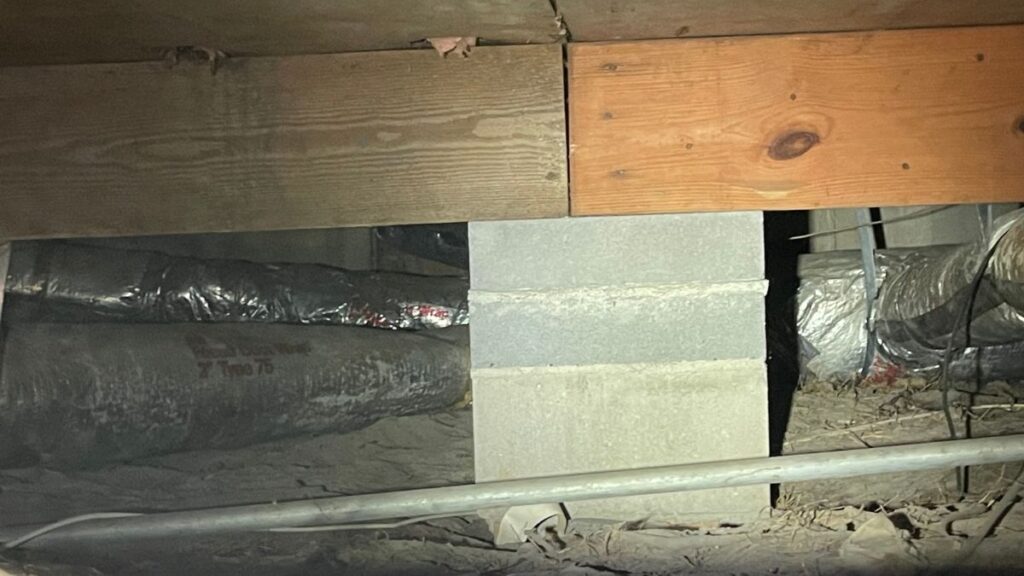
Failures of Pier and Beam Foundations
Despite their many advantages, pier and beam foundations are not immune to failure. Understanding common failures can help you identify potential problems early and take appropriate action.
One of the most common causes of failure in pier and beam foundations is soil movement. This can occur due to various factors, including changes in soil moisture content, freeze-thaw cycles, and seismic activity. When the soil moves, it can cause the foundation to shift, leading to structural damage.
Another common cause of failure is poor construction. If the foundation was not properly designed or built, it may not be able to support the weight of the house. This can lead to various problems, including cracks in the walls and floors, doors and windows that won’t open or close properly, and even structural failure in severe cases.
A pest infestation can also lead to foundation failure. Termites, rodents, and other pests can damage the wooden components of a pier and beam foundation, weakening the structure and leading to failure.
Finally, water damage is a common cause of foundation failure. Allowing water to accumulate in the crawl space can lead to wood rot and mold growth, weakening the foundation and leading to failure.
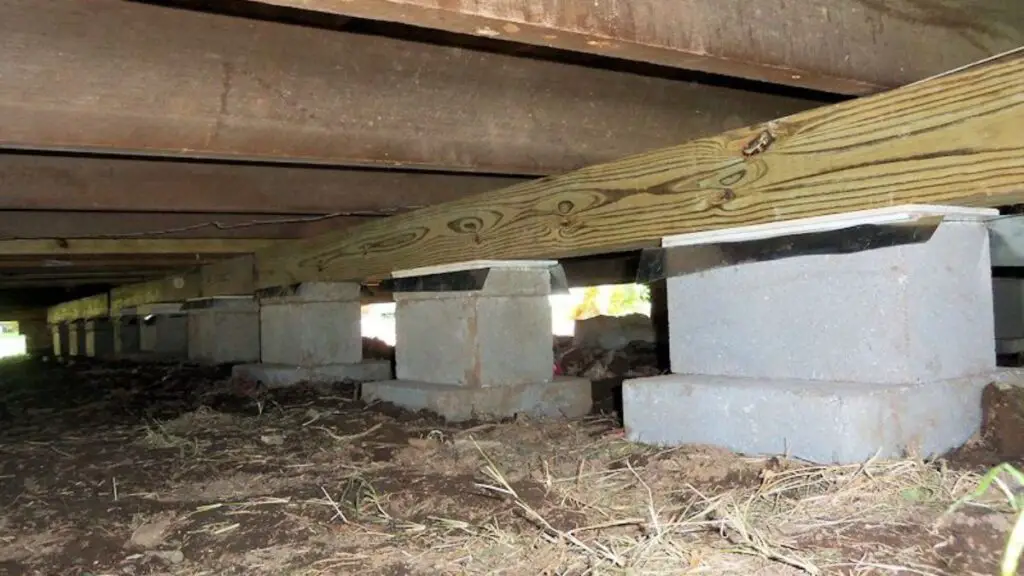
Pier and Beam Foundation Repair
The process can seem daunting regarding pier and beam foundation repair. However, you can confidently navigate this process with a clear understanding of the steps involved.
The first step in any foundation repair process is inspection and diagnosis. A professional foundation repair contractor will thoroughly inspect your foundation, looking for signs of damage or instability. This might involve examining the crawl space, checking for cracks in the walls or floors, and looking for signs of moisture issues or pest damage.
The foundation repair company will then diagnose the problem, identifying the underlying cause of the foundation damage. This could be anything from soil movement to poor construction, pest infestation, or water damage. Understanding the cause of the problem is crucial for determining the most effective repair method.
Once the problem has been diagnosed, the contractor will develop a repair plan. This plan will outline the steps needed to fix the problem and restore the integrity of your foundation.
Several foundation repair methods and techniques can be used to address problems with pier and beam homes. The specific method will depend on the problem’s nature and your foundation’s condition.
Helical piers may be used along the exterior foundation walls of a crawl space foundation to fix stair-step or horizontal cracks in brick or block masonry.
5 Pier and Beam Repair Methods
Here are some common repair methods you can use to repair foundation settlement in pier and beam construction:
- Leveling and Stabilizing: This involves adjusting the concrete piers and wooden beams to level the foundation and stabilize the structure. This is often done using hydraulic jacks and other specialized equipment. The contractor will carefully raise the foundation, adjust the piers and beams, add additional piers where necessary, and lower the foundation back onto the adjusted supports. This can correct issues with uneven floors and help prevent further structural damage.
- Pier Replacement: If the piers are damaged or failing, they may need to be replaced. This involves removing the old piers and installing new ones in their place. The new piers will be designed to provide strong, stable support for your foundation, ensuring that your home remains safe and secure.
- Beam Replacement: Similarly, if the wood beams are damaged or failing, they may need to be replaced. This involves removing the old beams and installing new ones in their place. The new beams will be designed to distribute the weight of your home evenly across the foundation, preventing uneven settling and other problems.
- Subfloor and Joist Repair: If the subfloor or floor joists are damaged, they may need to be repaired or replaced. This involves removing the damaged components and installing new ones in their place. This can help ensure that your floors remain strong and stable, preventing further damage to your home.
- Crawl Space Encapsulation: This involves sealing the crawl space foundation to protect it from moisture, pests, and other potential problems. This can help prevent future foundation issues and improve your home’s overall health and safety.
Several factors can influence the final price of the pier and beam foundation repair. These include the extent of the damage, the repair method used, and the size of your home.
In general, pier and beam foundation repair can be less expensive than other types of foundation repair due to the accessibility of the crawl space. However, the cost can still vary widely depending on the specific circumstances.
It’s also important to remember that while the cost of foundation repair can be significant, it’s often a worthwhile investment. By repairing your foundation, you can prevent further damage to your home, improve its safety and stability, and potentially increase its value.
Case Studies
Look at real-life examples to better understand pier and beam foundation repair. These case studies illustrate the challenges and solutions associated with this type of foundation repair.
Case Study 1: Leveling and Stabilizing a Historic Home
In this case, a historic home with a pier and beam foundation was experiencing significant settling due to soil movement. The floors were uneven, and there were visible cracks in the walls. The homeowners called in a professional foundation repair contractor who diagnosed the problem and recommended leveling and stabilizing the foundation.
The contractor used hydraulic jacks to lift the foundation carefully, adjusted the piers and beams to level the structure, and then lowered the foundation back onto the adjusted supports. This process corrected the uneven floors and helped prevent further structural damage. The homeowners were pleased with the results and reported that their homes felt more stable and secure.
Case Study 2: Replacing Damaged Piers and Beams
In another case, a homeowner noticed their floors were sagging, and their doors and windows were sticking. Upon inspection, a foundation repair contractor found several piers and beams were damaged and needed to be replaced.
The contractor removed the damaged piers and beams and installed new ones. The new piers and beams provided strong, stable support for the foundation, correcting the sagging floors and ensuring that the doors and windows operated properly. The homeowner was relieved to have the problem fixed and was satisfied with the quality of the repair work.
Case Study 3: Crawl Space Encapsulation
In this case, a homeowner was dealing with a musty smell and suspected it was coming from the crawl space. A foundation repair contractor inspected the crawl space and found evidence of moisture and mold growth.
The contractor recommended crawl space encapsulation to seal the space and protect it from moisture. This involved installing a vapor barrier on the floor and walls of the crawl space and sealing all vents and openings. The encapsulation process eliminated the musty smell and helped prevent future foundation issues.
These case studies illustrate the importance of professional foundation repair and the effectiveness of various repair methods. Whether you’re dealing with soil movement, damaged piers and beams, or moisture in your crawl space, effective solutions are available to address these issues and restore the integrity of your foundation.
FAQs About Pier and Beam Foundation Repair
Below are some of the most frequently asked questions about pier and beam foundation repair. These questions are based on common queries and concerns homeowners often have when dealing with foundation issues.
What is better pier and beam or slab foundation?
Pier and beam homes offer easy access to plumbing and electrical systems. They are suitable for flood-prone or sloping lots, while concrete slab foundations are more affordable, quicker to install, and suitable for areas with stable soil conditions.
How long does a pier and beam foundation last?
You can expect a pier and beam foundation to last 50 to 100 years or longer with proper care and maintenance, barring a natural disaster event. Regular inspections and timely repairs are key to its longevity.
What are the signs of pier and beam foundation problems?
Look out for uneven or sagging floors, cracks in walls or floors, doors and windows that stick or won’t close properly, and a musty smell in your home. These could all be signs of potential foundation problems.
How much does pier and beam foundation repair cost?
The cost can vary widely depending on the extent of the damage, the repair method used, and the size of your home. However, pier and beam foundation repair is generally less expensive than other types of foundation repair due to the accessibility of the crawl space.
How long does pier and beam foundation repair take?
The timeline for repair can vary depending on the extent of the damage and the repair method used. However, most pier and beam foundation repairs can be completed in a few days to a week.
Can I live in my home during pier and beam foundation repair?
In most cases, you can continue to live in your home during the repair process. However, there may be some noise and disruption, and certain areas of your home may be temporarily inaccessible.
How can I prevent future pier and beam foundation problems?
Regular inspections and maintenance can help prevent future foundation issues. This includes checking for signs of damage, ensuring proper drainage around your home, and addressing any potential problems as soon as they arise.
Remember, it’s always best to consult with a professional foundation repair contractor if you have any concerns about your foundation. They can provide you with expert advice and guidance, helping you maintain the integrity and stability of your home.
Conclusion
You should now have a comprehensive understanding of pier and beam foundation repair. From recognizing the warning signs of foundation problems to understanding the repair process, you can now make informed decisions about your home’s foundation.
Regular maintenance and early repair are the keys to maintaining a healthy foundation. By watching for warning signs and addressing potential issues as soon as they arise, you can prevent minor problems from becoming major headaches.
Choosing a reliable foundation repair service is also crucial. Look for a contractor with a solid reputation, a track record of successful repairs, and a commitment to customer satisfaction.
Your home is one of your most valuable assets; its foundation supports everything else. By taking good care of your foundation, you’re not just protecting your home – you’re also protecting your investment.
Remember, knowledge is power. The more you know about your home’s foundation, the better equipped you’ll be to keep it in top shape. So keep learning, stay vigilant, and don’t hesitate to seek professional help when needed. Your home – and your peace of mind – are worth it.
Sources:


